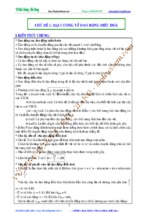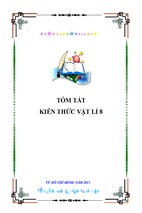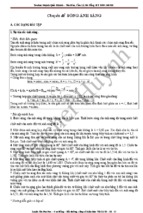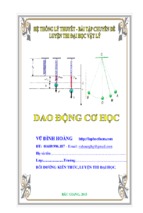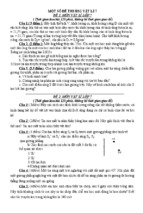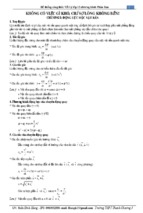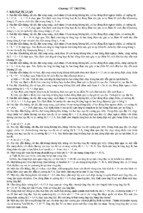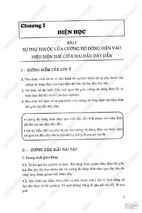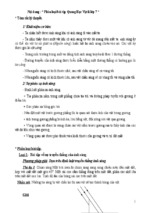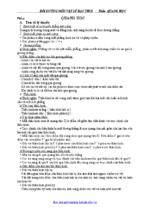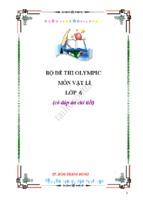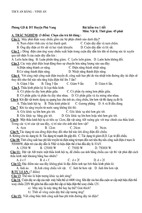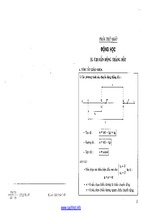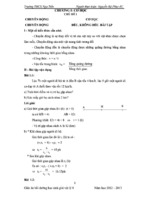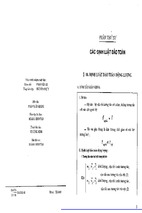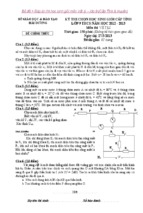About The Thomson Corporation and Peterson’s
With revenues approaching US$6 billion, The Thomson Corporation (www.thomson.com) is a leading global provider of
integrated information solutions for business, education, and professional customers. Its Learning businesses and brands
(www.thomsonlearning.com) serve the needs of individuals, learning institutions, and corporations with products and
services for both traditional and distributed learning.
Peterson’s, part of The Thomson Corporation, is one of the nation’s most respected providers of lifelong learning online
resources, software, reference guides, and books. The Education SupersiteSM at www.petersons.com—the Internet’s most
heavily traveled education resource—has searchable databases and interactive tools for contacting U.S.-accredited
institutions and programs. In addition, Peterson’s serves more than 105 million education consumers annually.
Artwork by Timothy J. Finley
Editorial Development: Sonya Kapoor Turner
Special thanks to my wife, Faye, and Mrs. Cathy Walton.
For more information, contact Peterson’s, 2000 Lenox Drive, Lawrenceville, NJ 08648;
800-338-3282; or find us on the World Wide Web at www.petersons.com/about.
COPYRIGHT
© 2002 Peterson’s, a division of Thomson Learning, Inc.
Previous edition
© 2001.
Thomson LearningTM is a trademark used herein under license.
ALL RIGHTS RESERVED. No part of this work covered by the copyright herein may be
reproduced or used in any form or by any means—graphic, electronic, or mechanical,
including photocopying, recording, taping, Web distribution, or information storage and
retrieval systems—without the prior written permission of the publisher.
For permission to use material from this text or product, contact us by
Phone: 800-730-2214
Fax: 800-730-2215
Web: www.thomsonrights.com
ISBN 0-7689-0960-0
Printed in the United States of America
10 9 8 7 6 5 4 3 2 1
04 03 02
CONTENTS
Red Alert .....................................................1
About the Book .......................................................... 1
About the Physics Test ............................................... 2
Scoring .............................................................................. 3
Taking the Test .................................................................. 3
SAT II Physics Study Plans ......................................... 4
Preliminary Preparations .................................................. 5
The 18-week Plan .............................................................. 6
The 9-Week Plan ............................................................... 8
Panic Plan .......................................................................... 9
Key Formulas and Equations ................................... 11
Units and Conversions ............................................. 12
Diagnostic Test ...........................................13
Answers and Explanations ...................................... 31
Chapter 1: Preliminary Concepts .................45
Simple Equations and Algebra ................................. 47
Graphs ...................................................................... 48
Right Triangles ......................................................... 52
Units and Conversions ............................................. 56
Scalars and Vectors ................................................... 57
Chapter Summary .................................................... 67
Chapter 2: Mechanics .................................69
Statics ...................................................................... 71
CONTENTS
Torques ..................................................................... 77
Kinematics ............................................................... 80
Motion in Two Dimensions...................................... 87
Newton’s Laws of Motion ........................................ 90
Work and Energy ..................................................... 96
Momentum............................................................. 100
Circular and Rotary ................................................ 103
Chapter Summary .................................................. 109
Chapter 3: Waves ....................................113
Wave Properties ..................................................... 115
Chapter Summary .................................................. 135
Chapter 4: Heat and
Thermodynamics ......................................137
Temperature ........................................................... 139
Thermal Properties of Matter ................................ 140
Thermodynamics ................................................... 149
Chapter Summary ................................................. 160
Chapter 5: Electricity and
Electromagnetism .....................................161
Electrostatics .......................................................... 163
Electric Fields ......................................................... 166
Electric Circuits ...................................................... 168
Magnets and Magnetic Fields ................................ 179
Chapter Summary .................................................. 191
CONTENTS
Chapter 6: Modern Physics .......................193
Particulate Theory of Light .................................... 195
Photoelectric Effect ................................................ 198
Relativity ................................................................. 201
Chapter Summary .................................................. 211
Chapter 7: The Atom.................................213
The Atom ................................................................ 215
Radioactivity ........................................................... 224
Particles .................................................................. 232
Chapter Summary .................................................. 234
Practice Test 1 ..........................................237
Practice Test 2 ..........................................271
Practice Test 3 ..........................................305
Practice Test 4 ..........................................337
RED ALERT
ABOUT THE BOOK
Now that you have decided to tackle the SAT II Physics Test, you need
to develop a plan to maximize your chances of achieving a high score.
The reason you want a high score is simple. The higher your score, the
better you look to the admissions officers at the college of your choice.
The SAT II Physics Test is designed to measure the knowledge and
achievement of high school students who have completed a college
preparatory physics class. This book will help you review for the SAT
II Physics Test. If you have not taken a Physics class yet, it may be
advisable to wait until after you complete one before you progress
further.
This book is arranged in several sections, beginning with a diagnostic test. The purpose of this test is to identify your strengths and
weaknesses. It will also help to familiarize you with the testing method
used by the College Board. Do not skip the diagnostic test! Find a
quiet, comfortable spot, turn off the TV, computer, and music, and try to
take the entire diagnostic test within the time allotted. If you run out
of time, mark on your answer sheet where you ran out of time. Then
keep going until you complete the test.
After finishing the test, you deserve a break, so take one. But be
sure to come back after no more than 15 minutes and check your
answers. Then go back, reread the questions you missed, and try to
figure out what went wrong. Did you jump to a conclusion, misread
the question, stop at the first correct answer (sometimes there are
multiple correct answers to one question), or just not know the material? None of these reasons is cause for serious concern right now,
because every reason mentioned can be overcome. In fact, as you work
through this book, each of these will be addressed.
Once the diagnostic test is done it’s time to settle down to your
preparation for the real SAT II Physics Test. Move on to the Physics
review and study each section as if you had to learn the material all
over again. Those sections you know well will go by smoothly and help
you to build confidence, while your review of unfamiliar terms and
concepts will allow you to learn it quickly and effectively.
Peterson’s: www.petersons.com
RED
1
ALERT
RED ALERT
When you have finished your review, take the practice tests. Once
again, you should try to set up a test-like situation. Make sure all the
electronic toys are out of the way (besides, the College Board doesn’t
allow them), time yourself, and do your best. After you check each test,
read the explanations for those questions you missed, and for additional reinforcement, reread the Review Section that covers the material in the question.
ABOUT THE PHYSICS TEST
The SAT II Physics Test is a 75-question multiple-choice test. The test
covers the following topics:
•
•
•
•
•
•
Mechanics
Heat/Kinetic Theory/Thermodynamics
Waves
Electricity and Magnetism
Modern Physics
Miscellaneous Topics (may include measurement, math, and history)
Nearly 40 percent of the SAT II Physics Test will test your knowledge of Mechanics. Electricity and Magnetism also make up a significant proportion of the material, accounting for about 25 percent of the
questions. Approximately 20 percent of the questions deal with waves,
and the remaining 15 percent covers the other topics listed above.
Because the material covered in high school physics courses can
vary widely, you will probably find some questions on the test that
cover topics with which you are unfamiliar. This may be impossible to
avoid entirely; however, solid preparation and review of the concepts
and information covered in this book will go a long way to helping you
navigate unfamiliar territory.
The testing procedures for the SAT II Physics Test are similar to
those you already know from your high school classroom. A few
questions will be simple recall; about half of the questions will require
you to be able to apply a physical concept for a given situation; and the
more difficult questions will require that you be able to apply multiple
concepts to multiple relationships.
In addition to a college preparatory physics course, you will also
need a solid working knowledge of algebra and trigonometry, as well
as laboratory experience. Familiarity with the metric system is critical.
You ar
e not per
mitted to use a calculator dur
ing the test.
are
permitted
during
The calculations focus on simple arithmetic and will not require a
calculator.
RED
2
ALERT
Peterson’s SAT II Success: Physics
RED ALERT
SCORING
Your score on the SAT II Physics Test will be reported on a scale of
200–800. Each question you answer correctly counts as one point. Each
incorrect answer counts as 1 4 point against you. Unanswered questions
do not count for or against you.
Clearly, the more incorrect answers you can eliminate from a set
of choices, the better your chances of finding or guessing the correct
answer.
TAKING THE TEST
You will be given one hour (60 minutes) to complete seventy-five
questions. Because of the limited amount of time you have for each
question, it is vital that you adopt a test-taking strategy and stick to it.
There are several things that you can do to give yourself the best
possible chance to score well on the test.
Set up a study program for yourself and faithfully follow it. Do
not skip any part(s) of the program.
1. When you take the diagnostic and practice tests, make sure to
familiarize yourself thoroughly with the test directions, as they
are patterned after the actual directions on the SAT II Physics
Test you will be taking. Becoming familiar with the directions
saves you time in re-reading them on test day.
2. Quickly read the entire test question by question. Answer immediately the questions you know or can do as you read through the
test the first time; skip those questions you can’t answer right
away.
3. Once you’ve gone through the entire test, go back to the beginning and work on the questions you skipped. Look for answers
to eliminate. The more answers you can eliminate, the better your
chances to recognize or guess the correct answer.
4. If you finish the test before time is up, go back and look over
your answers. Only change an answer if you are absolutely sure
you have the incorrect answer selected.
5. Get a good rest the night before the test. A primary reason for
poor test performance is lack of sleep.
Peterson’s: www.petersons.com
RED
3
ALERT
RED ALERT
SAT II PHYSICS STUDY PLANS
You already know the importance of a study plan when preparing for
this test. Needless to say, the amount of time you have before you’re due
to take the test has a lot to do with which of the following plans you’ll
select for your exam preparation.
Those of you who are not taking the SAT II Physics Test in the
near future should follow our leisurely 18-week plan. This plan is
favored because it gives you plenty of time to thoroughly prepare,
review all required concepts, and restudy the material you find challenging.
The next option is the 9-week plan, which calls for a more concentrated effort on your part. You will have to pay more attention to
your diagnostic and practice test results in this plan, as those questions
you miss become indicators for the material to which you should pay
extra attention.
Finally, the last method is the Panic Plan. This plan is for you if
you’ve got hardly any time to prepare but still want to do your best,
like when you find out your college of choice wants to see your SAT II
Physics Test score and the next test administration is in just a few
weeks! Using this plan you will spend as much time as you have available preparing for the SAT II Physics Test by using this book to line you
up for the test.
RED
4
ALERT
Peterson’s SAT II Success: Physics
RED ALERT
PRELIMINARY PREPARATIONS
Browse through the book. Look at the chapter summaries. Take the
Diagnostic Test. Follow the instructions for taking the test and then
check your answers. After you have taken the test and graded it, be
sure to read all the explanations for the answers. Pay particular attention to the explanations for the questions you missed. Try to identify
the reasons why you answered a question incorrectly. Was it carelessness on your part? You would be surprised at the number of students
who miss a question they knew by inadvertently marking the wrong
choice. Perhaps you misread the question, or maybe you were hurrying
too much.
Look through the answers and explanations for the questions you
missed. Be sure you understand why the correct answer is correct.
Write down the numbers of the questions you missed or would like to
understand a little better. They are your benchmark questions. If you
miss a lot of the questions about magnetism or thermodynamics, for
example, this tells you where to concentrate your efforts. Identifying
these weak areas is especially important if you are following the Panic
Plan and will be helpful no matter how long you have to prepare.
Sometimes students say the test questions are tricky, but the
students who know the material are difficult to fool and quickly eliminate the “tricky” answers. This is not to say that they don’t have to
think about what they are doing. Some of the questions are truly
challenging and will require your best effort, so prepare yourself well.
Start each chapter by reading the summary at the end, which lists
everything in the chapter. As you read through a chapter, work out the
problems on your own when you come to them. When you reach the
werful
end of a chapter, read the summary again. Repetition is a po
pow
learning tool.
Peterson’s: www.petersons.com
RED
5
ALERT
RED ALERT
THE 18-WEEK PLAN
Week 1
Diagnostic Test
Review the answers to the Diagnostic Test.
Review Chapter 1: Preliminary Concepts
Week 2
Chapter 2
2:: Mechanics
Statics
Kinematics
Dynamics
Week 3
Chapter 2
2:: Mechanics
Work and Energy
Momentum
Circular and Rotary Motion
Week 4
Chapter 3: Waves
Wave Properties
Reflection
Refraction
Week 5
Chapter 3
3:: Waves
Polarization of Light
Interference
Diffraction
Week 6
Chapter 4
mod
ynamics
4:: Heat and Ther
Thermod
modynamics
Thermal Properties of Matter
Kinetic Molecular Theory
Gases
Week 7
Chapter 4
mod
ynamics
4:: Heat and Ther
Thermod
modynamics
Laws of Thermodynamics
Heat Engines
Calorimetry
Week 8
Chapter 5
5:: Electricity and Electromagnetism
Coulombs Law
Electric Fields and Potential
DC Circuits
Week 9
Chapter 5
5:: Electricity and Electromagnetism
Magnets and Magnetic Fields
RED
6
ALERT
Peterson’s SAT II Success: Physics
RED ALERT
Week 10
Chapter 6
6:: Modern Physics
Quantum Mechanics
Work Function
Week 11
Chapter 6
6:: Modern Physics
Relativity
Heisenberg
Compton
deBroglia
Week 12
Chapter 7
7:: The Atom
The Nucleus
Atomic Spectra
Bohr’s Atom
Week 13
Chapter 7
7:: The Atom
Nuclear Reactions, Equations, and Radiation
Fission and Fusion
Binding Energy and Mass Defect
Week 14
Pr
actice Test 1 and Pr
actice Test 2
Practice
Practice
Review Answers and Explanations
Reread all the chapter summaries
Week 15
Review the material from the questions you missed on
Practice Test 1 and Practice Test 2
Reread the chapter summaries
Week 16
Pr
actice Test 3 and Pr
actice Test 4
Practice
Practice
Review Answers and Explanations
Reread all the chapter summaries
Week 17
Review the material from the questions you missed on
Practice Test 3 and Practice Test 4
Reread the chapter summaries
Week 18
Start the week by reading all of the chapter summaries.
Go over all of the test questions you missed on the
Diagnostic Test and the four practice tests. Review the material
you are not sure you have mastered! Think positive. You are
ready!
Peterson’s: www.petersons.com
RED
7
ALERT
RED ALERT
THE 9-WEEK PLAN
Week 1
Diagnostic Test
Chapter 1
eliminar
y Concepts
1:: Pr
Preliminar
eliminary
Week 2
Chapter 2
2:: Mechanics
Week 3
Chapter 3
3:: Waves
Week 4
mod
ynamics
Chapter 4
4:: Heat and Ther
Thermod
modynamics
Week 5
Chapter 5
5:: Electricity and Electromagnetism
Week 6
Chapter 6
6:: Modern Physics
Week 7
Chapter 7
7:: The Atom
Week 8
Pr
actice Tests 1 and 2
Practice
Review the answers to the questions you missed
Week 9
Pr
actice Tests 3 and 4
Practice
Review the answers to the questions you missed.
Reread the chapter summaries, paying particular attention
to any material you missed previously
RED
8
ALERT
Peterson’s SAT II Success: Physics
RED ALERT
PANIC PLAN
This last plan is for the group of students (and I hope it is small) who
for whatever reason don’t have much time to prepare for the SAT II
Physics Test. Perhaps you have just completed a physics class and you
don’t think you need to spend much time in preparation, or maybe you
have just decided to take the test. Only you know how much study
time you have and how much energy you are willing to devote to
preparation. Try to use both your time and energy wisely.
The list below will help you to prepare for the test in whatever time
you have available. By all means try to do everything on the list. If that
is not a possibility, the most important items are first. Do them! In fact
do as much as you can.
• Read the chapter summaries, which will help you renew your basic
physics knowledge.
• Take the Diagnostic Test, and review the questions you miss. This
gives you an idea of your needs.
• Take Practice Test 1, and go over any questions you miss.
• Take Practice Test 2, and go over the questions you miss.
• Take Practice Test 3, and go over the questions you miss.
• Take Practice Test 4, and go over the questions you miss.
• Reread the chapter summaries
Good luck!
Peterson’s: www.petersons.com
RED
9
ALERT
KEY FORMULAS AND EQUATIONS
∆y
Slope =
∆x
2
2
r =y +x
nλ = d sinq
1
S = Vo t + at 2
2
PV = n r t
P1 V1 = P2 V2
2
S=
y
sin q =
r
1 2
gt
2
V1 V2
=
T1 T2
F = ma
P1 P2
=
T1 T2
Wt = mg
x
cos q =
r
Work = F • S • cos q
PE = mgh
tan q =
y
x
KE= l/2 mv
Power =
∑F=0
∑ Fx = 0
∑ Fy = 0
P = mv
∑ Fz = 0
Ft = m∆V
Τ = F≥
Fc =
∑Τ=0
∑ +Τ = ∑ −Τ
Speed (U)
distance d
=
time
t
V=
V f + V0
2
∆V = Vf – V0
∆t = t f –to
a=
a=
∆V
∆t
V f − V0
t f − t0
Vf = V0 + at
Vf2 = Vo2 +2as
Peterson’s: www.petersons.com
( P1 )(V1 ) ( P2 )(V2 )
=
T1
T2
2
∆Q = ∆U + ∆W
work
time
Q = cm∆T
F=K
(q1 )(q2 )
r2
F = EQ
mV 2
r
V = IR
Rt = R1 + R2 + R3 + R…
(m )(m )
F =G 1 2 2
r
θradians =
S
V=
t
1
1
1 1
=
+
+
Rt R1 R2 R 3
arclength s
=
radius
r
P = VI
F = B⊥ IL
stan = qr
F = B⊥ qV
Vtan = Wr
EMF = BLV
atan = αr
Vs N s
=
Vp N p
V= λf
f =
Relativistic Factor
1
Τ
E = hf
φ = hf
∆ E = E2 –E1
hi q
=
h0 p
1 1 1
= +
f p q
n1sin q1 = n2 sin q2 (Snell’s Law)
11
1
v 2
1− (c)
E = mc2
Activity =
T1/2 =
∆N
∆t
.693
λ
∆N
= λN o
∆t
UNITS AND CONVERSIONS
SI Units
length
meter
m
mass
kilogram
kg
time
second
s
electric current
ampere
A
temperature
Kelvin
K
Metric Prefixes
T
tera
1 × 10
G
giga
1 × 109
10 9
M
mega
1 × 106
10 6
hK
hectokilo
1 × 105
10 5
ma
myria
1 × 104
10 4
K
kilo
1 × 103
10 3
h
hecto
1 × 102
10 2
d
deka
1 × 101
10 1
Basic Unit
12
10 12
1 meter – 1 gram – 1 liter
d
c
m
deci
centi
milli
1 × 10–1
–2
1 × 10
1 × 10–3
10 –1
–2
10
10 –3
dm
decimilli
1 × 10–4
10 –4
cm
centimilli
1 × 10–5
10 –5
u
micro
1 × 10–6
10 –6
n
nano
1 × 10–9
10 –9
p
pico
1 × 10–12
10 –12
12
Peterson’s SAT II Success: Physics
Diagnostic Test
PHYSICS TEST
- Xem thêm -

